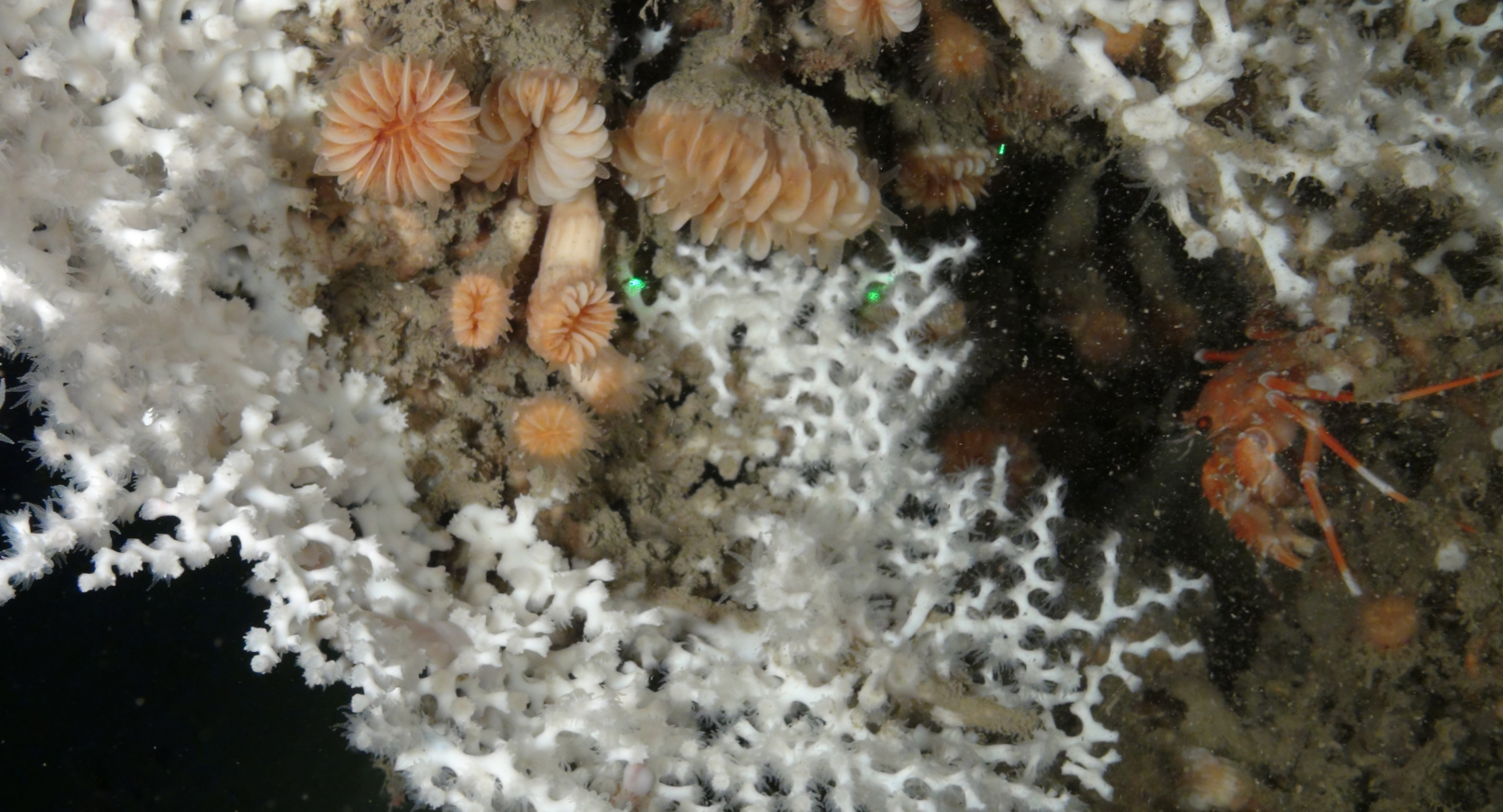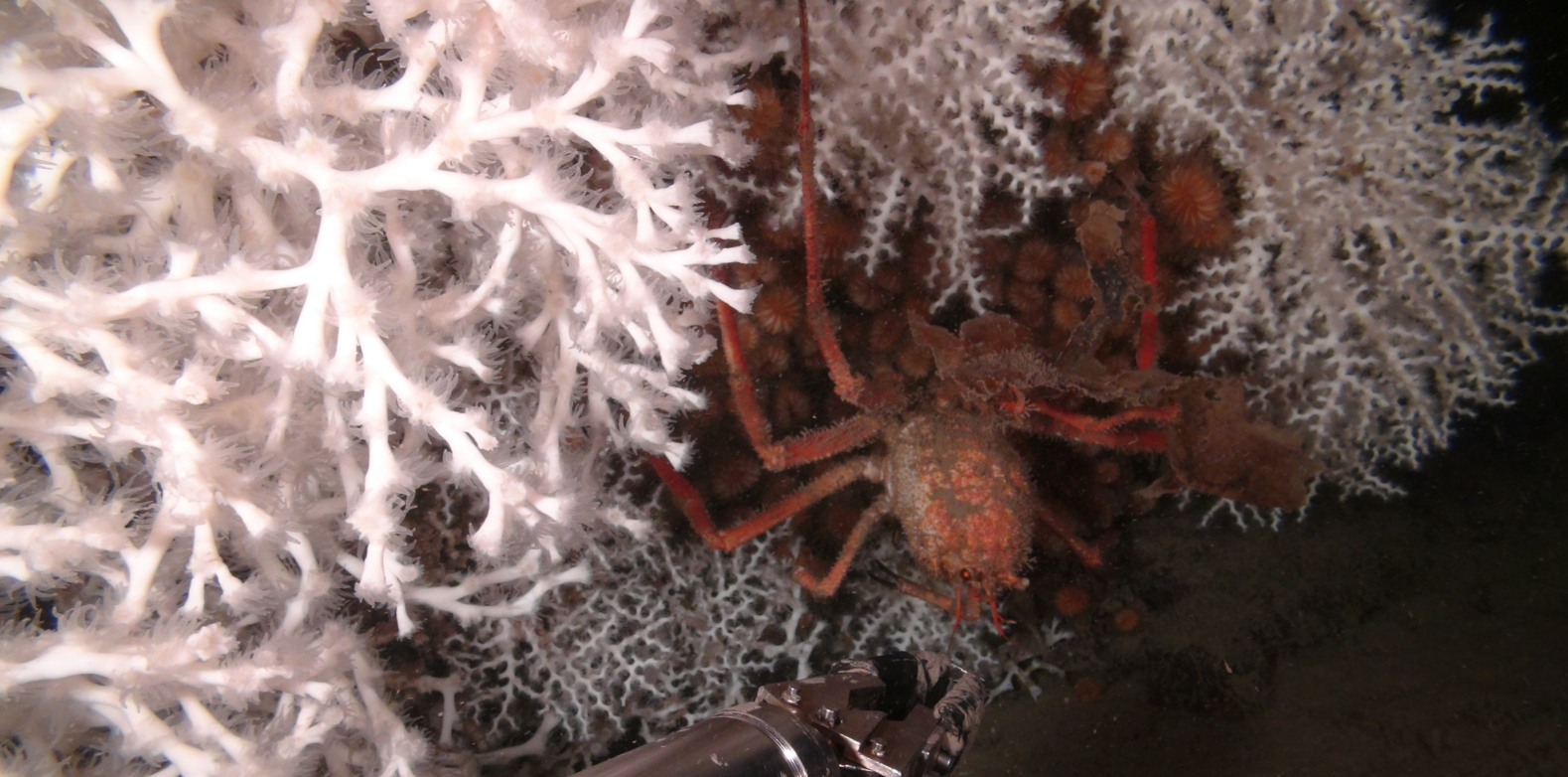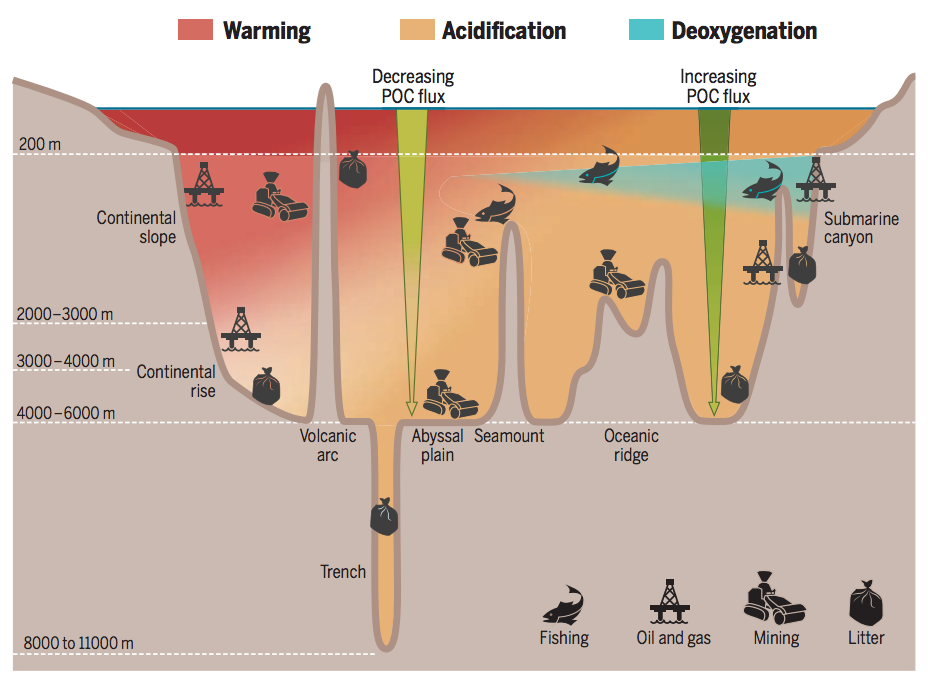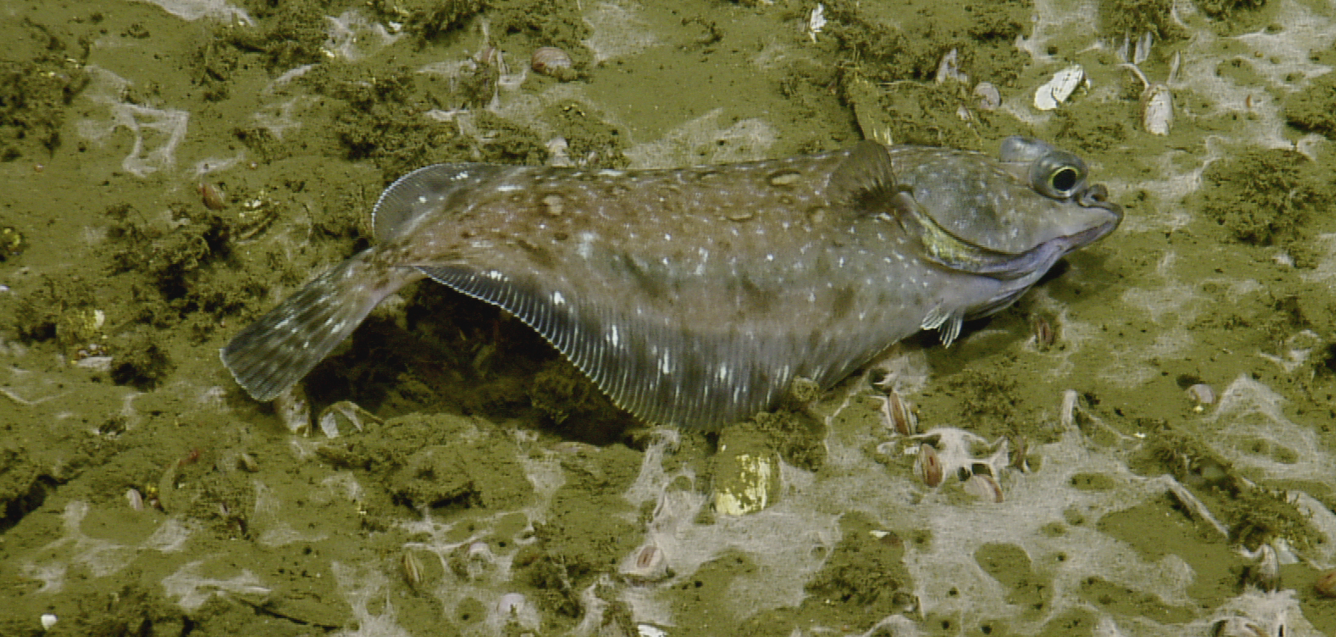Deep Ocean: Climate change’s fingerprint on this forgotten realm
Posted on 2 December 2015 by Guest Author
This is a re-post from Roz Pidcock at Carbon Brief
From overfishing to mineral mining, we humans subject our oceans to myriad stressors. Many hundreds of metres below the surface, the deep sea isn’t untouched by climate change either.
With the global oceans getting warmer and more acidic as they absorb heat and carbon dioxide, habitats and food webs are changing with them, a new perspective in the journal Science explains. The paper is part of a new special issue, looking at the oceans and climate change.
But while the consequences of biodiversity loss will affect us all, the deep sea exists in a “policy vacuum”, the authors argue. Next month’s climate summit in Paris needs to serve as a forum to get the deep ocean more attention on the world stage, they say.
Prof Nadine Le Bris, a marine chemist and co-author on the new paper, tells Carbon Brief:
So far, the attention has been mostly directed on terrestrial environments and quite recently coastal areas. There are still big gaps, particularly the open ocean and ocean floor ecosystems.

Deep water corals provide habitat for other species (Lacaze-Duthiers canyon, Western Mediterranean Sea, 520 m depth). Credit: LECOB_Chaire UPMC-Foundation Total
Feeling the heat
Most of the habitable space on earth is not on land, today’s paper begins. More than 90% of it is in the deep ocean.
Over the time we’ve been industrialising, the oceans have absorbed about a third of the carbon dioxide that’s gone into the atmosphere. That has slowed the pace of atmospheric warming to some extent, but it has come with consequences.
Carbon dioxide dissolves in seawater to form carbonic acid. With a typical pH ranging between an alkaline 7.8-8.4, this extra acid has pushed the pH of seawater down by 0.1, on average.
The oceans have also taken up more than 90% of the heat trapped by greenhouse gases in the atmosphere, raising temperatures at the surface by 0.1C per decade since at least the 1970s.
But some of the heat finds its way much deeper. Seawater at about 700m has warmed by about 0.015C per decade since the 1970s, according to the latest report from the Intergovernmental Panel on Climate Change (IPCC). Measurements from 700m down to 2,000 metres suggest that section of the ocean has warmed in the last decade or so, too (though the data doesn’t extend before that).
The amount of oxygen in seawater has dropped in many parts of the global ocean, leading to the expansion of what are known as “oxygen minimum zones.” This is partly because warmer water holds less oxygen, but the main reason is that warming makes ocean layers less inclined to mix, meaning less oxygen is transported from the surface to deeper layers.

Spider crab among deep-sea corals in the Mediterranean Sea (Lacaze-Duthiers canyon, 520 m depth). Credit: LECOB_Chaire UPMC-Foundation Total
Vulnerable
The deep ocean has a number of features that set it apart from surface and coastal waters, today’s paper explains:
Numerous deep-sea habitats such as seamounts, canyons, hydrothermal vents, and methane seeps are hotspots of biodiversity and biomass, concentrating photosynthetic or chemosynthetic energy and sometimes providing essential commercial resources.
Deep sea ecosystems are particularly vulnerable because the species that live there have evolved to survive within very narrow limits. Dr Lisa Levin, biological oceanographer and lead author on the new paper, tells Carbon Brief:
Many of those species we know grow and reproduce slowly, live a long time and have evolved under fairly stable conditions (in ecological time). These would be most vulnerable to change.
The potential for damage to ecosystems and species we haven’t even discovered yet is great, Levin adds:
The deep ocean contains a high diversity of largely unknown and undescribed species (from microbes to invertebrates)…Almost certainly, the genetic diversity in the ocean holds future solutions to some of the problems we face.
Since the deep ocean accumulates heat and carbon dioxide over very long timescales, it’ll be a while before the full effects of climate change are felt. Satellites can get a detailed look at the ocean floor and robots are helping to map and photograph parts of it, but a lot more research is needed, Levin adds:
In the deep ocean warming, ocean acidification and ocean deoxygenation, as well as changing food supply are already occurring and we have barely begun to study this.
Warming of the seafloor also has the potential to release methane from gas hydrates buried along continental margins, the paper explains:
A climate-induced shift in warm currents such as the Gulf Stream may be sufficient to release many gigatons [billion tonnes] of frozen methane from the seafloor.

Human and climate change impacts on the ocean. Stressors will overlap most along continental margins but changes in the deep ocean have more global consequences. Source: Levin & Le Bris (2015)
‘Policy vacuum’
The latest IPCC report included only a limited consideration of ocean ecosystems, says Le Bris. She suggests the organisation’s next special report should focus on the oceans, a notion for which other countries have already expressed support.
More immediately, the authors of today’s paper are calling for delegates attending the climate talks in Paris next month to bring the issue of the oceans, particularly the deep ocean, to the foreground. Levin tells Carbon Brief:
Oceans were highlighted in the initial UNFCCC document in 1992 but have fallen out of the conversation over next 15 years. This is changing now and there are many voices inserting the ocean back into the conversation, if not the negotiation text.
The problem is that most of the deep sea – about 64% – lies beyond national boundaries, which means it’s outside of national jurisdiction. This is one reason states may consider it’s not in their mandate, says Le Bris. Another reason is that the United Nations regulates the seafloor, but only in terms of mineral resource permits and fisheries. Levin tells Carbon Brief:
On the high seas, beyond national jurisdiction, there is one agency that regulates minerals on the seabed and protection of the environment from mining – the International Seabed Authority. The FAO [Food and Agriculture Organisation of the United Nations] and many regional fisheries management organisations regulate the fish in the water.
Despite growing scientific understanding of the impacts of climate change on the deep sea, that knowledge exists in a “policy vacuum”, the paper explains.

A Dover sole (harvested commercially) in a methane seep that sits in the middle of the oxygen minimum zone (OMZ). Bacteria, seep clam, forams, and their habitat may expand with warming (more methane release) and only the most tolerant species (like the Dover Sole) may survive. Credit: Ocean Exploration Trust
Who should pick up the slack? The International Maritime Organization regulates dumping in international waters, so could they could potentially be responsible for carbon dioxide, suggests Levin. There is also treaty called Biodiversity Beyond National Jurisdictions being negotiated by the UN that she hopes will address biodiversity in international and deep waters. She adds:
On top of this, the Convention on Biological Diversity and theSustainable Development Goals all are trying to address conservation issues. Bringing these together to recognise and take action to slow then halt climate change in the deep ocean is a major challenge – but something I would like to see happen.
At the very least, Levin says she would like to see delegates in Paris agree to reduce carbon dioxide emissions to a level that will “keep the planet safe”. If they do this the deep ocean will benefit, she says. Looking beyond that, Levin wants more technical discussions between delegates to acknowledge the key role the deep ocean plays in mitigating climate change.
In terms of where the science goes next, Levin says there’s an urgent need for a deep-ocean observation network to improve climate modeling, and evaluate feedbacks between the ocean that can act to speed up or slow down the rate of warming. The ocean’s capacity to absorb heat and carbon dioxide is not indefinite, she warns.
Levin, L. & Le Bris, N. (2015) The deep ocean under climate change. Science. DOI:10.1126/science.aad0126































 Arguments
Arguments






























This discussion of what is irrevocably happening in the oceans due to the unintended, deleterious consequences of industrialization is just one of the symptoms of what has gone wrong. However, the efforts of the likes of Levy can well contribute to society slowly waking up to making sound adaption and amelioration decisions. Hopefully, the Paris talks will see a little progress in that direction.
Does anyone know if the sea currents are tightening around Antarctica?
Does anyone know where to find the answers to such questions?